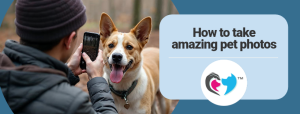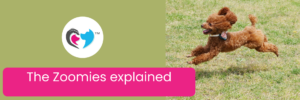You’ve done the research, you’ve chosen the puppy, and you’re about to bring him home. The day you collect your puppy is so exciting, but it can be unsettling for him as he leaves his mother and litter mates, maybe for the first time ever. Here are some things to remember to ensure you’re ready to take care of him in the best possible way.
Things to get before your puppy arrives:
- Water and food bowls: This goes without saying, but the pup should have his own food and water bowl, appropriate to his size and in a place that is easily accessible to him.
- Bed and blanket: Getting him his own bed from the beginning will help teach him where you want him to sleep. This could also be sent to the breeder or rescue for a week before you fetch puppy so that the smell of mom and siblings are on the bedding, helping the transition go smoother by providing some olfactory comfort to your new puppy.
- Chew toys: Remember your puppy is probably teething right now, so chew toys will be very important. Make sure you have a selection of chew toys for him and swap them out, so he doesn’t get bored. KONGS, hooves (under supervision) and treat dispensing balls are all good options.
- Enrichment toys: Up to now, your puppy has had littermates to keep him busy, but now you will have to keep him occupied. Enrichment toys such as puzzle toys, brain games and licky mats are a great way to keep him busy and entertained.
- Interactive toys: Interactive toys such as balls and tug toys are great fun for the whole family. Play is integral to a puppy’s life and creates great bonding opportunities.
- The right length lead: You’ll want to walk puppy, so getting him used to a lead is vital. We don’t recommend starting with an ultra-long lead, retractable lead or chain, but rather with a standard 2m long nylon webbing lead that can be bought at most vets or pet shops. Your lead can be used with either a harness or collar of your choice. Get puppy used to the collar/harness and lead by allowing him to wear it for short periods at a time and rewarding him with praise and treats.
- Adjustable collar with ID tag: Even if your pup is microchipped, getting him used to a collar right from the beginning is a good idea. Start with a light collar with a light ID tag, and preferably make sure that the collar has a pressure release or safety catch, as pups can get into trouble or get stuck really quickly. Never use choke chains, prong collars, slip collars or shock collars on your puppy!
- Treats and good quality puppy food: Treats will be significant in your first few weeks, as you will be rewarding the puppy for wanted behaviours like going to the toilet outside, chewing appropriate items and obedience training. Ask the breeder or rescue that you got your puppy from what food they have been feeding him, and change over to the vet-recommended food slowly if this food is different to what you are planning to feed. Ask your vet what treats, and food would be appropriate for your puppy.
What’s the right age to bring your puppy home?
The best age to bring a puppy home is when he is between 9 and 10 weeks old. By then, he should be weaned and have learned early canine social skills by being with his mother and litter mates. He should have also received his first vaccination and deworming.
If you collect him too soon, he’ll miss this critical learning opportunity, which could impact his future emotional well-being.
Set the boundaries from the beginning
It’s important to remember that your puppy doesn’t automatically know what you expect from him, and it will take some time for him to learn what is and isn’t allowed. Setting boundaries from the start that you keep throughout his life will set him up for success. For example, if you won’t want him sleeping on your pillow as an adult 40 kg dog, don’t encourage him to sleep on your pillow as a tiny puppy.
Introductions
Introducing your new puppy to any existing pets can be a nerve-wracking event. Making sure that introductions go well can set the foundation for their future relationship. Make sure to take it slow, go at your animal’s pace and reward calm, happy behaviour.
For more information on introducing a dog to your current cat, please read our article here: https://coape.org/cat-to-dog-introductions-a-step-by-step-guide/
House-training your puppy
The first thing everyone wants to know when acquiring a new puppy is how to house-train him. Remember that consistency is the key to success when house-training. Positive reinforcement (rewarding when they go outside) and quietly cleaning up the “oopsies” inside will make your house-training journey a far better one.
Please read our full article on house-training your pup here: https://coape.org/housetraining-puppy/
Set a feeding schedule right from the beginning
Dogs feel reassured by knowing when they’ll be fed, so begin a feeding routine from day one. Your puppy should be fed 2 to 3 times daily with good quality food. Try to feed in a quiet spot in your house; each animal must have their own food bowl to prevent any food-guarding problems in the future. Once your puppy is finished eating, remember to take him outside for a toilet break, as most pups will need to go straight after eating.
Training
You may feel overwhelmed in the early weeks of bringing home a new puppy. There are supplies to shop for, vet appointments to make, and lots of training and teaching to be done, not to mention a few sleepless nights as puppy settles in. Setting up the right behaviours and expectations during puppyhood is essential for a happy dog-human relationship and training your puppy in basic obedience will make this much more manageable. We highly recommend that all new puppy owners enrol for puppy socialisation and basic training classes.
You can find a list of COAPE-qualified trainers on the COAPE website here: https://coape.org/find-a-behaviourist/
Basic cues like loose leash walking, recall (to come when called), and drop can be taught at home. Read our great articles on how to teach your pup these here:
Loose leash walking: https://coape.org/top-training-tip-loose-leash-walking/
Recall: https://coape.org/top-training-tip-recall/
Drop it: https://coape.org/top-training-tip-drop-it/
Teaching your puppy about his environment
- Introduce new sounds: Puppies have very sensitive hearing, so unfamiliar sounds can frighten them. Even basic household sounds like the hairdryer, or the toilet flushing can cause alarm if your puppy wasn’t born in a home environment. During your puppy’s first week with you, introduce him to sounds such as a hairdryer, doorbell, music and vacuuming. Keep the sound low initially not to scare him, then gradually increase the sound as your puppy becomes more comfortable. Reward calm, happy behaviour with lots of praise!
- Help your puppy explore: Your puppy will need to learn how to tackle a variety of environments, terrains and obstacles. So, help him on his way by introducing him to stairs or steps and various surfaces. Make sure not to overcome the obstacle for him by constantly picking him up. Allow him to problem-solve, but also don’t force him.
- Travel in the car: Whether you’re going to the vet or out for the day, your puppy will likely need to travel in a car at some stage soon. So, it’s worth getting him used to it early on. Start with just switching the car on and reward calm behaviour in the car with lots of praise, then gradually increase the amount of travel time until puppy is happy to travel in the car. Don’t use too many treats in the car, as this can cause nausea.
- Get your puppy used to handling: The vet will want to check your puppy from nose to tail, especially in the first few visits. It’s best to gently get him used to being picked up and handled all over his body and ensure this is a pleasant experience from the start. Rub his ears, handle his paws and reward him for calm behaviour by offering praise, treats or even a game of tug – whatever he enjoys most.
Consider crate training
Crate training your dog is not about keeping them in a cage all day; in fact, crate training can be highly beneficial to your dog and becomes their safe and happy spot. Crate training for your dog should be done carefully and slowly. The most important thing is to ensure your dog enjoys and feels comfortable being in his crate. Please read our article on crate training here: https://coape.org/crate-training-how-and-why/
Exercise
Though puppy may still be tiny, exercise is an essential part of his daily routine and one that the whole family can enjoy. Once he is used to his harness, take him out for short walks daily and reward him for walking nicely on the lead (read more about loose leash walking here: https://coape.org/top-training-tip-loose-leash-walking/). It’s a good idea to walk him in the early evening, just before supper time, as this will tire him out and help him sleep through the night. Be cautious not to over-exercise him, as this could damage his growth plates and lead to early-onset arthritis and hip dysplasia.





